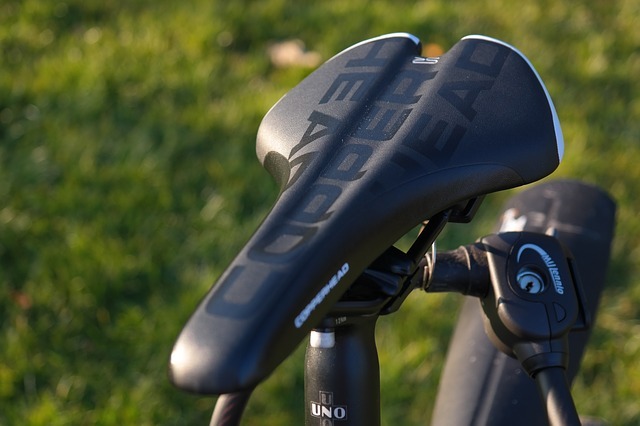Saddle sores can be a painful side effect of cycling. Instead of suffering needlessly from these painful irritations, you can treat them to speed up the healing process.
Saddle sores can vary among individuals but often appear as a raised, red area in the region that makes contact with the saddle. In some people, saddle sores appear more like bumps, pimples, and boils. They can be caused by an infected hair follicle or ingrown hair that is irritated by the saddle of your bike. In other people, saddle sores actually abrade the skin.
Although there is no sure-fire way to prevent all saddle sores, there are some tips that will help you avoid most occurrences. Much of the prevention comes down to trial and error. I will go into these later, but first, let’s treat your pain and irritation.
Saddle Sore Treatment
1. Stay off the bike for a couple days. Time on the bike exposes your saddle sores to pressure and irritation- both of which exacerbate the irritation. Take a couple days off and wear light, breathable clothing. Allow as much airflow as possible over the irritated area. Use it as an excuse to lay around half-naked, if it makes you feel better!
2. Stay clean. Wash the irritated area twice a day using a mild antibacterial soap. Cetaphil is a great product that will keep your saddle sores clean without causing any further irritation. After you wash, pat dry with a clean cloth. Do not try to pop or squeeze any sores or boils that have developed. Simply clean the surface of the skin and allow these areas time to heal on their own.
3. Apply a thin layer of antibacterial ointment. Neosporin makes a great product that contains an added pain reliever. Apply a small dab and gently rub it over the surface of any swelling and irritation. Although I have never tried it, I have heard others say that hemorrhoid cream is effective in minimizing swelling and discomfort. Another home remedy calls for diaper rash ointment, but I feel it’s best to avoid this as it’s thick and greasy, and tends to stick.
4. Visit your physician. Most saddle sores can be treated at home, but some require medical treatment. If your saddle sores are bad enough that you are having trouble sitting or walking, it’s time to visit your physician. Also, if the pain and redness doesn’t clear up in a couple days, get it checked out. Obviously, if you develop a fever, chills, or another sign of infection, visit your doctor. He or she may prescribe an oral antibiotic to relieve the skin infection. You may also receive an anti-bacterial ointment or cream, especially if you have open sores.
5. If your saddle sores recur, even after making changes to prevent them, consider a visit with a dermatologist.
Once you are all healed, you will want to make changes to help you avoid the issue reoccurring.
For a free legal consultation,
call 1-844-242-9253
Ways to Avoid Saddle Sores
1. Keep the affected areas clean and dry. After you ride, when you are likely sweaty, use a mild baby wipe or similar product to clean around the area, and be sure to pat dry with a clean cloth. Some people even use a hair dryer on the cool setting to make sure they are dry before dressing. Be sure you wear clean shorts each time you ride.
2. Wear good cycling shorts. Skip the underwear and opt for chamois on skin. Try to find a pair that has no seams in the crotch area and has additional padding to minimize chaffing.
3. As soon as you get off the bike, take your shorts off and wash them. Always wear a clean pair of bike shorts, and try not to keep them on any longer than necessary.
4. Use a lubricant or chamois cream on your chamois. Butt cream, Chamois Butt’r, and Hoo Ha Ride are among the brands on the market, but simply Vaseline can work in a pinch. The purpose is to lubricate the interface between skin and chamois to prevent friction as you ride. But don’t use too much, as it can cause movement of the chamois over your skin – which can actually increase the friction.
5. Lower your seat so that you don’t have as much friction when you ride. Check into having a professional bike fit, if the problem continues.
6. Look into purchasing a new saddle that fits you better. A quick visit to your local bike shop can be helpful as they always have a number of options available for consideration.
Ideally, you can catch and treat your saddle sores quickly, before the pain and irritation becomes significant. It’s always best to treat the irritation early before it worsens or becomes infected.
To learn more about how to effectively treat your cycling aches and pains, as well as learn more about cycling safety, follow our Facebook page or check out our other blog posts!
Call or text 1-844-242-9253 or complete a Free Case Evaluation form


